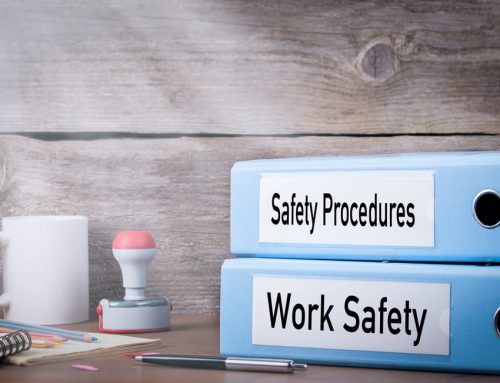Nobody likes a bully. So much so, in 2010, Bill 168 was introduced in Ontario to get rid of them. Also known as theOccupational Health and Safety Amendment Act, Bill 168 aims to eliminate violence and Harassment in the workplace.
Bullying at work is hurtful, targeted behaviour. It builds a pattern that diminishes the recipient. These actions reduce productivity and overtime create a hostile environment. This article will explore workplace bullying to help you recognize actions that aren’t acceptable, and what to do about it.
WHAT IS WORKPLACE BULLYING
The term “bullying” is pretty generic. It can include physical and mental distress being inflicted. Examples of bullyinginclude (but aren’t limited to):
- Targeted practical jokes.
- Excessive performance monitoring.
- Being intentionally mislead, such as incorrect deadlines or unclear directions.
- Threats, and other verbal abuse.
- Harassment or violence.
Bill 168 defines workplace harassment as:
- “Engaging in a course of vexatious comment, or conduct against a worker in a workplace that is known or ought reasonably to be known to be unwelcome”;
- “Workplace sexual harassment”.
Meanwhile, workplace violence is defined as:
- “The exercise of physical force by a person against a worker, in a workplace, that causes or could cause physical injury to the worker;
- “An attempt to exercise physical force against a worker, in a workplace, that could cause physical injury to the worker”;
- “A statement or behaviour that it is reasonable for a worker to interpret as a threat to exercise physical force against the worker, in a workplace, that could cause physical injury to the worker”.
WHAT WORKPLACE BULLYING IS NOT
While criticism can be taken too far, into bullying territory, generally it’s not. Constructive criticism is a necessary part of all jobs. It helps us learn and grow, as long as it’s delivered properly. When criticism is taken to a point of intimidation, or humiliation, such as singling someone out in front of their peers, it’s no longer constructive.
The same can be said about monitoring an employee. Checking in with your staff, ensuring they’re on the right track is necessary. However, when taken too far, such as openly monitoring and commentating on their performance, then the actions are seen as bullying.
EMPLOYERS RESPONSIBILITY
The Ontario Health and Safety Act (OHSA) states that employers need to take the following actions to help prevent violence or harassment:
- Provide a written policy to all employees that includes definitions of harassment, sexual harassment, and violence. The policy must be dated and signed.
- Review the policy annually to ensure it is applicable to all workers.
- Display the policy in a central location such as the lunchroom.
- Develop and maintain an anti-bullying program that helps to implement company policy.
The anti-bullying program mentioned in step four needs to be prepared by the health and safety committee, or representative and should promote:
- The organization’s commitment to providing a safe workplace, including a zero-tolerance policy that is applicable to all workers.
- Definitions for “workplace harassment”, “sexual harassment”, and “workplace violence”.
- Protocol for addressing such issues, including reporting and investigating.
- Confidentiality or privacy of the matter.
EARLY WARNING SIGNS OF BULLYING
Both managers and employees should be made aware of the early signs of bullying. These may include:
- Feeling left out of office culture such as parties or team luncheons.
- Noticing a manager is checking on you more than others (without reason).
- Being asked to do new tasks that aren’t considered your typical duties; or having to do these tasks without proper training.
- Noticing a pattern of documents, or personal belongings disappearing.
On their own, these early signs are miniscule. However, over a period of time you may start to detect patterns that are negatively affecting you.
PROTECTING YOURSELF
When bullied, it’s natural to feel powerless; as though there’s no stopping it. Speaking to a manager about it may feel intimidating as well. Many employees feel their manager won’t believe them, or fear being seen as “not a team player”. This causes many employees to feel shutdown before even addressing the complaint. These steps may help when addressing harassment in the workplace.
- DOCUMENT EVERYTHING: Keep track of all unwanted/unnecessary actions in writing, including when, where, and who.
- SAVE PHYSICAL EVIDENCE: It’s rare when physical evidence occurs from bullying, so when it does, keep it with the above documents. This could include threatening notes, or inappropriate email comments.
- REPORT THE BULLY: It’s likely your workplace has a designated person to talk to (that’s not your direct supervisor). Human resources, or the health and safety team are usually good choices.
- CONFRONT THE BULLY: Some people prefer reporting the bully first, others like to try to resolve it on their own. If you decide to confront them on your own first, ensure there’s a trusted witness to account for yours and the bully’s actions. Be sure to keep emotions out of the conversation, simply remain calm and direct during the discussion.
- SEEK LEGAL GUIDANCE: This is usually a last resort for most employees. If you’re being bullied at work though, and nothing you’ve tried has worked, then speaking to a team of legal professionals (especially one that is experienced in workplace and employment issues) is your next step. The team you work with will want to know what has happened, and when, which is another reason the previous four steps are necessary.






Leave A Comment
You must be logged in to post a comment.